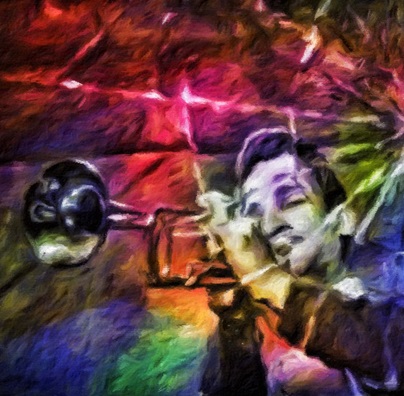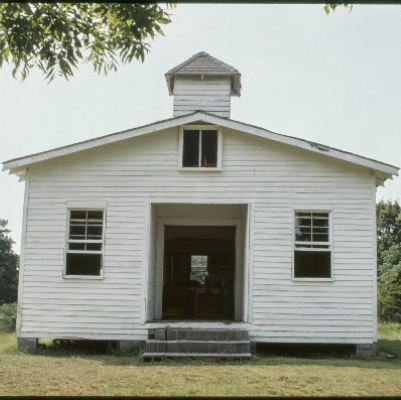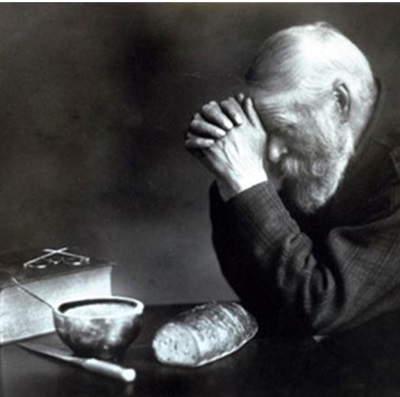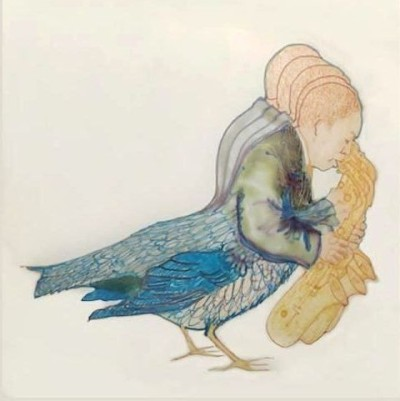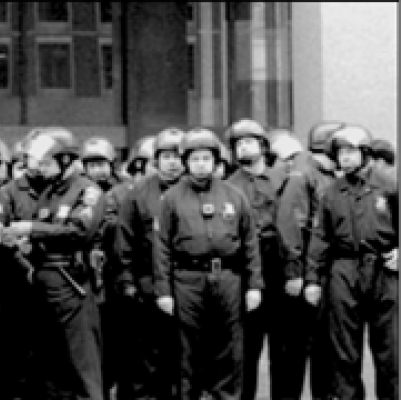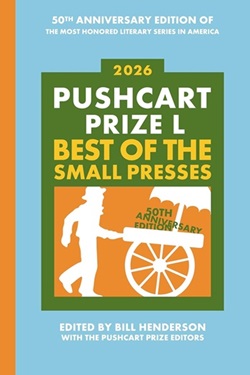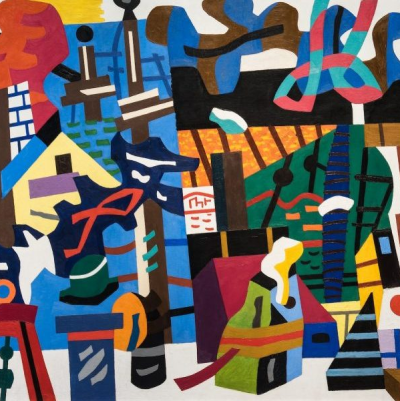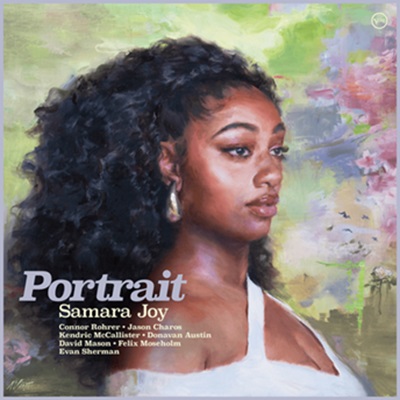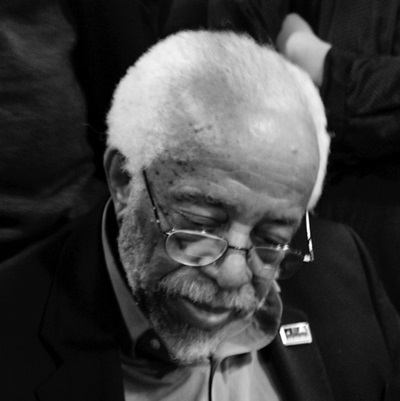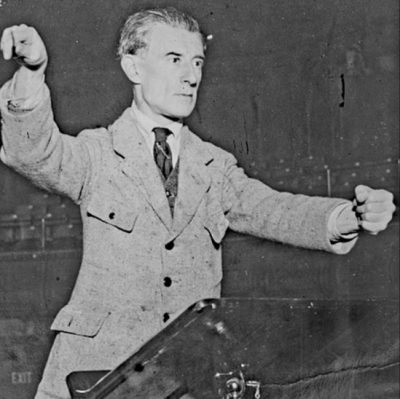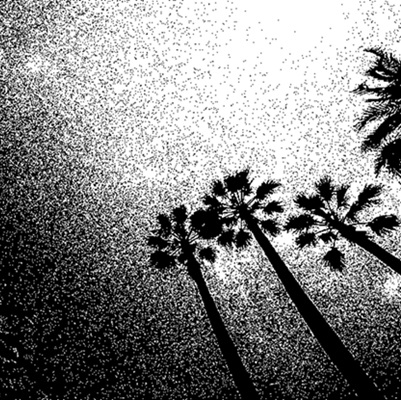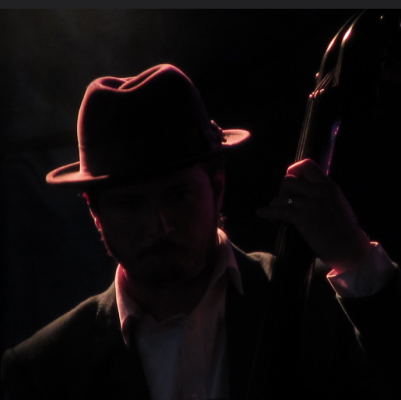Few observers of cultural history articulate their viewpoints quite like Martha Bayles. Her opinions on popular culture are intelligent, controversial, and in demand.
Her essay on Miles Davis recently appeared in the New York Times, and for years she was the television and arts critic for the Wall Street Journal, where her work still appears. Her book, Hole in Our Soul: The Loss of Beauty and Meaning in American Popular Music, was hailed by the Chicago Tribune as an “important book.” The New York Times said, “Ms. Bayles tells a morality tale of how culture lost its way by adopting attitudes that undermine its finest achievements.”
Bayles currently teaches humanities and literature at California’s Claremont McKenna College.
We are very proud to present this incredibly engaging, articulate observer in our exclusive Jerry Jazz Musician interview, where she shares her thoughts on bebop, the beat generation, rap music, and “perverse modnernism.”
Interview hosted by Jerry Jazz Musician publisher Joe Maita.
______________________________________
JJM What music were you exposed to as a child?
MB In my suburban Boston home there were two kinds of records, my parents’ swing LPs and my older brother’s rock ‘n’ roll 45s. What strikes me now is how unimportant this generational difference was at the time. My brother was a rebellious teenager, but no one connected his rebelliousness with his taste in music. On the contrary, the two dancers in the family, my mother and I, liked Elvis and Benny Goodman equally. That’s why I discount the myth that rock ‘n’ roll was a musical-cultural revolution. It did cause a stir in the South, where its mixture of black and white styles and audiences upset segregationists. (The reason why my suburb was unaffected was not because it was racially enlightened, but because nobody was trying to integrate it then.) Most Americans, including most Southerners, saw rock ‘n’ roll as the latest upbeat dance music, not all that different from the lively music of the 1930s and 1940s. It was Alan Freed, remember, who called it “swing with a different name.”
JJM What “benchmark” event occurred in your life that made you want to become a cultural historian?
MB None. I wanted to be a poet, not a cultural historian. But I was interested in music and in Afro-American culture, having spent my post-college years teaching in the public schools of Philadelphia and Boston. Partway through working on Hole in Our Soul I realized that I was going to have to include artistic modernism, because that is the source of many of the ideas in contemporary popular music.
JJM What is “perverse modernism?”
MB Perverse modernism is the strain in modern art that will do anything to get a rise out of the public. It’s not the sum total of modernism, by any means. Rather it’s the easy part. Millions of people who cannot grasp the formal innovations of Picasso or Parker have no trouble grasping “art” that rejects tradition, attacks standards, blurs the line between high and low, and (most important) uses shock and offense to attract attention and boost sales. These tactics are often classified as “post-modern,” but in fact they’ve been present since the dawn of modernism. A century ago, certain avant-garde artists in Europe believed that if they made the right anarchic gesture in the right setting, it would spark social and political revolution. No one believes this any more – indeed, there is a vacuum at the heart of today’s perverse modernism, where the old dream of revolution once stood. But the bold outrageous gesture is still thought the essence of “creativity” by many people who can know better (artists and pundits) and many who cannot (teenagers).
JJM Do you blame “the loss of beauty and meaning in American popular music” entirely on perverse modernism?
MB No. I also blame “primitivism,” by which I mean the old racist view of black people as being less capable than whites of controlling their aggressive and sexual urges. Under slavery and Jim Crow, this was used to justify the violent oppression of African Americans. In the first decades of the 20th century, when white Americans and Europeans flocked to such musical forms as ragtime and jazz (both largely, if not exclusively, the creation of blacks), it became fashionable to turn the old racist view on its head and romanticize blacks for being uninhibited and “natural.”
Some African Americans objected to this, because it reduced the demanding discipline of their music to mere instinctual expression. But others played up to it, giving the white folks (and paying customers) what they wanted. My point is that this primitivist view has gradually taken over. In the 1950s, Norman Mailer called jazz “the music of orgasm” and no one blinked. In the 1960s, rockers exploited the sexiness of the blues while ignoring its subtlety (and stoicism). In the 1970s, soul singers forget their gospel roots and became love men and disco queens. In the 1980s, hip hoppers copped the gangsta pose, and a new generation of Americans grew up equating true blackness with murder and rape. Need I say more?
JJM What is an example of a movement in popular music that combined a successful business venture (commerce) with high art or taste?
MB Despite the last two answers, I would say that many forms of popular music, past and present, have combined commercial and artistic success. If this were not so, then the topic would be of no interest to me – or to anyone.
JJM You suggest that pre-bebop jazz was “aesthetically sophisticated (yet) culturally innocent.” Can you explain that?
MB The music (at its best) is art of a high order. Yet the people who created it did not exalt themselves as “artists” in the high-minded (some would say too high-minded) sense that defined the 19th-century romantic artist, to say nothing of the 20th-century modernist. Jazz musicians before bebop saw themselves as paid entertainers – or, as the jazz historian Scott DeVeaux explains, as professionals. Unlike the romantics and modernists, who were in self-conscious opposition to the world of commerce and middle-class (bourgeois) taste, pre-bebop jazz people were trying to make it in that world! I don’t condemn this; on the contrary, I find it a source of strength and sanity in the Afro-American tradition, although one could certainly argue that at a certain point commercial motives have taken over for artistic ones.
JJM What effect did Charlie Parker’s lifestyle have on beat literature, and how did it impact 1950’s culture?
MB Here I defer to Ralph Ellison’s comparison of Louis Armstrong’s “make-believe role of clown” with Parker’s public persona as “a sacrificial figure whose struggles against personal chaos, onstage and off, served as entertainment for a ravenous, sensation-starved, culturally disoriented public.” Ellison makes it clear that he means the white audience, notably the beats, not the black. “Race is an active factor here, though not in the usual sense,” he writes. “When the jazz drummer Art Blakey was asked about Parker’s meaning for Negroes, he replied, ‘They never heard of him.’ Parker’s artistic success and highly publicized death have changed all that today, but interestingly enough, Bird was indeed a ‘white’ hero.” Ellison’s point is that while many white listeners loved Bird’s music, a significant number of them were also the voyeurs of his self-immolation.
JJM How did the defenders of 1950’s bebop respond to the mainstream media’s view of it as something cooked up by “crazy beatniks?”
MB Dizzy Gillespie made the media spotlight work for him – or tried to, though I can remember being confused as ignorant kid by the discrepancy between his antics and his towering, difficult music. Gillespie’s passion for Cuban music was partly an attempt to find his way back to the older jazz culture of artist-entertainer dazzling the paying customers. As for the intellectual defenders of bebop, they loved the music and considered it high art, but they also did it a disservice in forcing it into the romantic-modernist mold. Scott DeVeaux’s excellent book, The Birth of Bebop, tells this story with great finesse.
JJM You suggest that soul music had a “spiritual dimension transcending the erotic.” Please explain.
MB Nothing obscure or complicated. Soul came out of gospel. First there was “soul jazz,” the 1950s stream that included Miles Davis (in his hard bop phase), Art Blakey, Charles Mingus – and Ray Charles, one of the first to make the unvarnished gospel sound into “pop.” Then the 1960s brought the deluge: all those amazing singers, straight out of church, beginning with Sam Cooke and early Motown and continuing through Aretha Franklin, Otis Redding, and countless others. What I write that in the 1970s “soul lost its soul,” you can hear what I mean for yourself. Just play a record by one of the great gospel-trained vocalists – Al Green, say, or Gladys Knight – and hear that when these people sing about love, they express both the erotic and the spiritual side. What happened was this: influenced by the sexual revolution, one of the greatest soul singers, Marvin Gaye, began to sing exclusively about sex. And from there it was a short step to the over-sexualized black pop we have today. I liked Isaac Hayes’s “Hot Buttered Soul,” but I don’t like the oleo that followed: black performers panting and gasping according to stereotype, and in the process forgetting their music’s spiritual roots.
JJM In the 1960’s, it was felt by many of that era’s leading intellectuals that the heart of the counterculture was not literature, visual art, or film, but music. Do you feel music is the centerpiece of today’s counterculture?
MB Not really. The short answer is that over the last several years the art of song has suffered a couple of setbacks: the advent of MTV and the screen-dominated computer age, and the widespread acceptance of melody “hooks” as a substitute for well shaped melodies. There are several reasons for this: the rise of the singer-songwriter and the compulsion felt by singers to write their own material, even when they lack the ability; the impact of minimalism; and the emphasis, among black cultural nationalists, on rhythm as the “black” part of music, leaving melody and harmony as the “white” parts (an idea that would have astounded, say, Duke Ellington). This is a huge topic, but suffice it to say here that in 2001 music seems to be in second place as the soundtrack, the aural sauce, of a predominantly visual culture. (As for the counterculture, it is the culture, no?)
JJM You cite several examples of America’s craze for Afro-American music, yet our racial differences were never solved. You say “the rock and roll craze was marked by a mental compartmentalization of white pleasure in black performance in one compartment, white prejudice against black people in the other.” How did the emergence of the electronic media perpetrate this?
MB There have been several high-water marks in white love for black-dominated music. But none has resulted in America’s racial problems being solved. In the 18th and (especially) 19th centuries, most white Americans possessed one mental compartment that relished the artistry of blacks, and another that endorsed their subjugation. It would likewise appear that many black performers (both antebellum and postbellum) possessed one compartment that craved the applause of whites, and another that resented their domination. History is full of such paradoxes – only a fool or an ideologue would insist on a neat one-to-one correspondence between art and society. (By the same token, only a fool or an aesthete would say there is no meaningful relationship between the two.)
To some degree this changed during the 20th century, when jazz and (later) rock ‘n’ roll fans began to attend musical performances that were, despite the best efforts of the authorities, not segregated. But at the same time the electronic media made it possible to sustain the older mental compartmentalization. The mass audience for rock ‘n’ roll was not, for the most part, formed in integrated settings but in lily-white soda fountains, dance halls and automobiles where the undiluted musical culture of blacks was suddenly as accessible as a nickel in the jukebox or a twist of the radio dial. The music may have moved some whites to be sympathetic to blacks or to support civil rights. But in general, the rock ‘n’ roll craze, like all subsequent crazes for black-dominated styles, was largely facilitated by the technology of private consumption.
JJM Is rap music a form of racial revolution, and if so, what other movements of popular music of the past does it compare to?
MB About rap and politics, I like to paraphrase Gil Scott-Heron: It will be televised, but it will not be a revolution. Another huge topic. Rap “politics” comes from punk “politics,” I argue in Hole in Our Soul, and that’s not good. Punk is about spectacle, attracting media attention, and (among its “political” performers) striking radical poses as part of a marketable shtick. But politics, real politics, is less glamorous. It’s about organizing ordinary people to exert pressure on existing political institutions. It’s about developing leaders and building organizations that have a solid community base. Camera crews are rarely present when this work is being done, yet this is the work that changes lives and conditions. Show me the rapper who spends his or her time doing this, and I’ll show you one who deserves to be called political.
JJM What cultural atmosphere existed to bring about the popularity of rap?
MB I’ve talked about perverse modernism, and I’ve talked about primitivism. Do they ever come together? Yes, I’m sorry to say, they come together in gangsta rap. Let me say a few words about that, and then finish. Gangsta rap is only one strain of hip-hop (to use the proper term). It’s the most visible and marketable strain, to be sure, but that only raises the question: What makes gangsta rap so marketable?
The standard complaint about hip-hop is: “It’s not music.” It contains speech and rhythm, but no harmony and only rudimentary melody. That’s true. But it’s a description, not a complaint. Despite what you hear, hip-hop did not grow out the Afro-American musical tradition I’ve been discussing. Rather it grew out of a different tradition, a spoken tradition based in the West Indies. Hip-hop was created by immigrants: young New Yorkers whose parents had come from Jamaica, Barbados, and elsewhere in the Caribbean. This is important, because the real root of hip-hop is the improvised oral poetry known as “toasting” in Jamaica and “calypso” in Trinidad – and can be traced back to the griots of West Africa: the old-timers who, like the bards of ancient Ireland, could recite clan histories, offer praise songs, and insult prominent people with such skill that the better ones made a good living just keeping their mouths shut.
As part of this oral tradition, early hip-hop valued quick-witted improvisation. Today, of course, it is high tech. Records and videos are assembled digitally in the studio, and live performances tend to feel canned. Still, as a blend of words with state-of-the-art sound and visual collage, the artistic potential of hip-hop is great. But without the addition of melody and harmony, its strictly musical potential will remain limited.
Today, various schools of hip-hop, including gangsta rap, add dribbles of melody. But in gangsta rap this sweetening only goes so far. The lyrics and images are still freighted with abusive sex, casual violence, and grotesque racial stereotypes. The defenders of gangsta rap point out that some of this material comes from Afro-American folklore. They’re right. Like all folklore, Afro-American folklore contains a strain of gutter humor. But the question is: How did gutter humor come to be regarded as the acme of black expression?
My answer is that this is the convergence of primitivism and perverse modernism. Remember, gangsta rap is “crossover” music, meaning black music deliberately marketed to whites. And unfortunately, many young whites, raised on metal and punk, like war drums and in-your-face lyrics. For ten years black rappers have dominated this market by trading on white suburbia’s nightmare visions of inner-city pathology. Now a white boy called Eminem has upped the ante by adding on hate speech – I will let you imagine the next step.
JJM How do we as a society restore meaning and beauty to popular music?
MB Ah, the question posed by Lenin (that’s Vladimir, not John): What is to be done? The first thing I would say is that I do not favor increased censorship. This is an impossibility, both in constitutional and practical terms. Most objectionable material falls outside the narrow scope of the obscenity law. Feminists on the left and fundamentalists on the right talk about expanding the law, but any such effort is likely to collide with the First Amendment. That’s why politicians (the latest being Senator Lieberman) call for tighter regulation of the electronic media. But as those media grow and proliferate, they get harder and harder to regulate. Just ask China. Even with Big Brother watching, government can’t control what’s on every screen.
Censorship is a tricky subject, because popular music is full of prima donnas who damn every critic as a would-be censor. They worry that sharp criticism will persuade consumers (or, worse, record company executives) to spend less money on, say, homophobic rappers. Well, if that happened, I’d be glad. And it wouldn’t be censorship, it would be critics and other people exercising their right to free speech.
I also think the market plays a crucial role. But I am no libertarian, expecting the market to do magic tricks by itself. That is just as wrongheaded as blaming commerce for everything that’s wrong. The market is neither the root of all evil nor the remedy. It is, ultimately, neutral. With increasing efficiency it can multiply, amplify, and magnify cultural trends. But, try as it will, it cannot initiate them. All it can do is respond to a shift in public taste, brought about by the usual combination of things we cannot control and things we can.
In my more optimistic moments, I see that shift occurring. Young jazz musicians are reconnecting with the greater jazz past – and the greater jazz audience. Country musicians are confessing their debt to other branches of American music. A few singer-songwriters are actually writing real songs. And some alternative rockers have quit apologizing for knowing how to sing or play. Hard rock guitarists are unplugging their amps and waiting for their ears to stop buzzing. Young black performers are rediscovering something called soul. And high tech is bringing all kinds of music to all kinds of people.
This last situation, having everything at our fingertips, is part of what is meant by postmodernism. According to the academic experts, postmodernism puts everything on the same level – Monk, Mozart, the Monkees, the chanting monks. If this is true, then all music has lost its beauty and meaning. But it isn’t true. Human nature is not mutating into some new, anti-musical form. Even in 2001, most people still seek in music the same things that human beings have always sought there: Not the formal complexity of high art, necessarily, but not ugly noise, either. Instead, people seek the elemental, the primal things: the motive power of dance, and the emotional power of song.
Still, I worry about the powerful voices in the culture who insist on closing their ears to everything except the cutting edge of the cutting edge of the cutting edge. What are they scared of? Real music lovers keep their ears open, not closed. The best music has always been hybrid, crossing the barriers of age, race, gender, and class. That’s where I locate my optimism.
JJM What work is on the horizon for you?
MB I have just finished a book called Off White: A Personal Memoir About Race. The best way to describe it is to quote this marketing blurb: “In the golden days of rhythm & blues, singers used to respond to one another’s hit records by making ‘answer records.’ Off White is an ‘answer book’ to many recent memoirs by African Americans. As a white person who has taught black students, romanced black lovers, cultivated black friends, written about black culture, contended with black neighbors, and struggled with black obduracy, Bayles is bracingly candid about her experiences. Leaving behind political correctness of both left and right, she explores interracial territory that is sometimes welcoming, sometimes hostile. Many Americans have visited this territory, but few have dared to map it so accurately.”
_________________________
Hole in Our Soul:
The Loss of Beauty and Meaning in American Popular Music
*
Martha Bayles products at Amazon.com
_______________________________
If you enjoyed this interview, you may want to read our interview with cultural critic Albert Murray.





